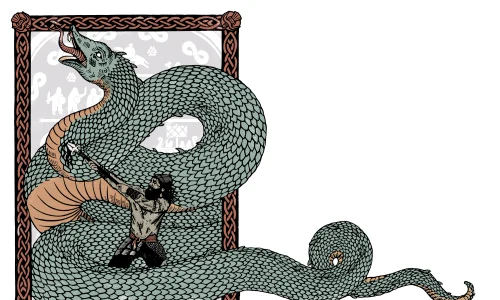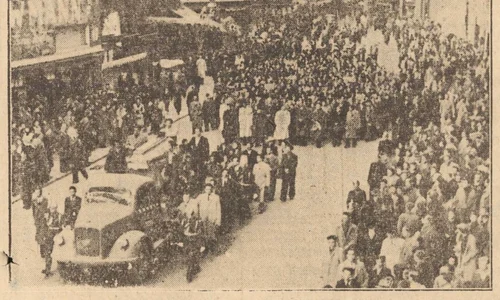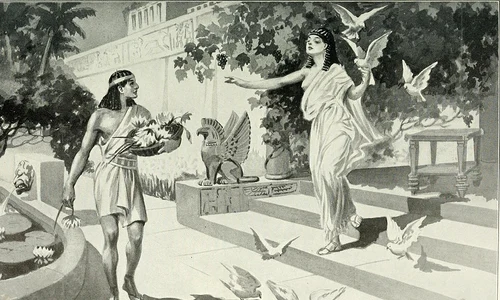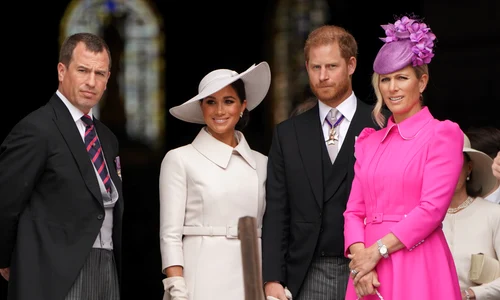
Communist historians write about the monarchy
The monarchy was a parasite on our country’s body.These were the words of communist leader Gheorghe Gheorghiu-Dej, for the Romanian Workers’ Party political report in February 1948. These are, perhaps, the words that best encompass the main ideas that have characterized, for the first two or three decades of communist regime, the manner in which Romania’s monarchic past was interpreted. The monarchy was presented as having hindered Romania’s progress;it was a reactionary institution responsible for stopping the country’s so called ‘natural’ development towards democracy.
Many historians have argued that the monarchy was a remnant of the Dark Ages, the historical period generally associated with obscurity, backwardness and bigotry. By comparing the monarchy’s reign with the Middle Ages, historians tried to accentuate the retrograde nature of the institution and the fact that, supposedly, it no longer suited the needs of a modern society (unlike the Republic, of course).
In 1958, two officers, V. Anescu and M. Popa, published a small book entitled The looting of the people by the monarchy. The book’s only purpose seems to be to prove that Dej’s words, presented in this text’s first paragraph, are true. In the preface, the two authors argue that their work contributes to a better knowledge of what the monarchy meant for the Romanian people. In fact, it is one of the harshest and, at the same, most inventive propaganda works concerning the monarchy. It is our opinion that the ideas found here can be considered representative for the manner in which the communist regime saw fit to present Romania’s former regime and rulers.
Anescu and Popa insist upon the reactionary and medieval nature of the monarchy. They also add that this institution was a stranger to the people’s true needs, having disregarded its interests in order to protect its own. According to the two, the monarchy was also an anti-workers, anti-peasants and anti-national institution, seeing as the king himself had supposedly ordered the repression of workers’ revolts (1920, 1929, 1933), peasants’ revolts (1888, 1907) and had ignored national interests (military ones, during the wars, or economic ones, by letting Western capitalists take over the economy). Anescu and Popa also argue that Romanians had always hated the monarchy and its representatives, thus welcoming the new republican regime.
One of the most important arguments brought against the monarchy is that it had always served the aristocracy’s and bourgeoisie’s interests instead of the people’s. Historian Gheorghe Ghimes explained that this was in the monarchy’s institutional nature, as it had to protect its class interests. And so, the monarchy becomes an institution ‘founded on inequality and privileges’, ‘incompatible with democracy and the people’s sovereignty.’
Generally speaking, all the communist writings that criticize the monarchy start from the same ideas:exploitation, class interests, and repression of popular movements, incompatibility with modern times and the need to respect the ‘natural’ evolution towards a socialist regime. The only things that differ are the authors’ ingenuity and tendency to write in a more or less propagandistic style. Their conclusions are, however, the same:the monarchy took advantage of the people to gain more and more wealth, they used violence and repression to suppress the people’s desire for freedom, and they exploited the peasants and workers.
The Hohenzollern-Sigmaringen dynasty
Historians criticized the monarchy itself, as an institution, and each of its representatives, but some also talked about the Hohenzollern-Sigmaringen dynasty in general, having identified certain negative characteristics.
Firstly, all historians that write about the dynasty accentuate its’ foreign, German origin. Moreover, some insist that its Prussian origin is an obvious telltale for its reactionary, militaristic style. Using the old prejudices against Prussia dating back from the 19thcentury, modern communist historians argued that the fact that Romania’s kings were of Prussian origin explained their reactionary, antidemocratic policies.
Historian Costin Murgescu wrote about the ‘plunderous’ nature of this German dynasty, and Gheorghe Ghimes used some of Marx’s works to expose the true face of the Hohenzollern family. Marx, the unquestionable authority in communist regimes and a German living in Britain, wrote about the innate cowardice of the Hohenzollern’s and its treacheries used to gain wealth.
The change in discourse
Over the years, the historical discourse changed, and the propaganda was replaced by a more moderate discourse and a reinterpretation of the monarchy’s role in Romanian history. The first change we notice, in the 1970s, is in the discourse regarding the former kings, no longer criticized so harshly. Later, in the 1980s, the monarchy, as in institution, also receives less criticism. Of course, we can’t really speak of a complete rehabilitation of the monarchy, but historians no longer talk only of its defects and shortcomings. Towards the end of the communist regime, historians can argue that the king was a ‘constitutional factor’ and that the monarchy played a ‘positive role in 1877 and 1916-1918’ (Romania’s independence war and during World War One). Of course, most of these positive arguments are almost always followed by certain critiques, but the change in discourse is more than obvious. For example, Ioan Scurtu, professor at the Faculty of History in Bucharest, writes that, in 1866, the monarchy, as a form of government, suited the country’s needs and objectives of modernization. He also argues that Carol I’s long reign, of 48 years, played an important role in Romania’s progress and democratic development.















